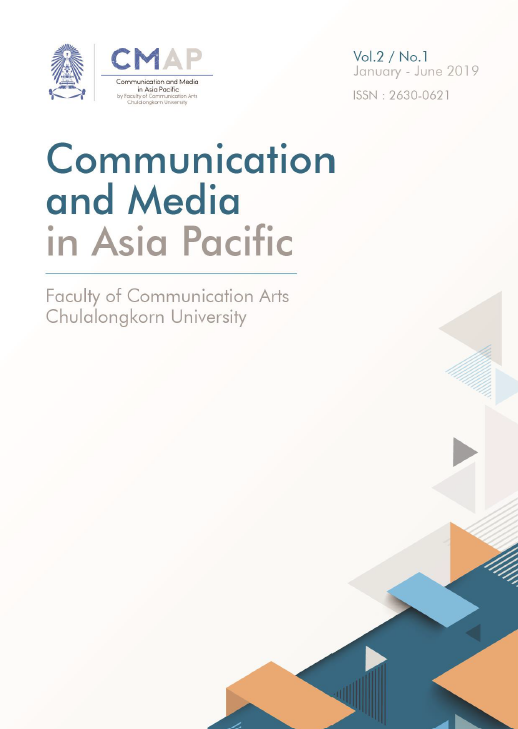An Exploration of the Creative Work Ontology for the Ontology Aggregation of Social Media
Main Article Content
Abstract
In view of the great success of social media, this paper raises an interesting question about how we should strengthen the existing social media so that we can have an even better communication means for business, education, e-government, etc., as suggested by some scholars. This question further leads us to investigate the possibility of having a social media ontology to reveal the room for creativity and the fundamentals that must be preserved for these possible new designs. However, forging a social media ontology may require ontology aggregation of various ontologies of the popular social media platforms and therefore, trigger the data loss issue involved. This paper aims at providing a solution to this data loss issue, and proposes the use of the properties of the Creative Work Ontology for the ontology aggregation of social media. It also provides an example of the proposed solution regarding the partial ontologies of Facebook and Snapchat.
Article Details
References
Alhabash, S., & Ma, M. (2017). A tale of four platforms: Motivations and uses of Facebook, Twitter, Instagram, and Snapchat among college students? Social Media+ Society, 3(1), 1-13.
Bayer, J. B., Ellison, N. B., Schoenebeck, S. Y., & Falk, E. B. (2016). Sharing the small moments: Ephemeral social interaction on Snapchat. Information, Communication & Society, 19(7), 956-977.
Bucher, T. (2012). Want to be on the top? Algorithmic power and the threat of invisibility on Facebook. New Media & Society, 14(7), 1164-1180.
Cavalcanti, L. H., Pinto, A., Brubaker, J., & Dombrowski, L. (2017). Media, meaning, and context loss in ephemeral communication platforms: A qualitative investigation of Snapchat. In CSCW (pp. 1934-1945).
Edosomwan, S., Prakasan, S. K., Kouame, D., Watson, J., & Seymour, T. (2011). The history of social media and its impact on business. Journal of Applied Management and Entrepreneurship, 16(3), 79-91.
Garimella, K., Morales, G. D. F., Gionis, A., & Mathioudakis, M. (2018). Quantifying controversy on social media. ACM Transactions on Social Computing, 1(1), 3.
Gulić, M., Vrdoljak, B., & Banek, M. (2016). CroMatcher: An ontology matching system based on automated weighted aggregation and iterative final alignment. Web Semantics: Science, Services and Agents on the World Wide Web, 41, 50-71.
Hung, E. C. K, & Choy, C. S. T. (2013). Conceptual Recombination: A method for producing exploratory and transformational creativity in creative works. Knowledge-Based Systems, 53, 1-12.
Hung, E. C. K. (2017a). An investigation of weak ontology for new media studies. In International Conference on Applied Human Factors and Ergonomics (pp. 126-131). Springer, Cham.
Hung, E. C. K. (2017b). Towards a generalization of new media. In International Conference on Applied Human Factors and Ergonomics (pp. 89-94). Springer, Cham.
Hung, E. C. K., Chan, A. Y. T., & Chan, R. C. Y. (2018). A study of rules, structures, features, and biases in the new media for digital advertising for the development of new media ontology. In International Conference on Applied Human Factors and Ergonomics (pp. 88-92).
Springer, Cham. Krishen, A. S., Berezan, O., Agarwal, S., & Kachroo, P. (2016). The generation of virtual needs:Recipes for satisfaction in social media networking. Journal of Business Research, 69(11), 5248-5254.
Lytras, M. D., Mathkour, H., Abdalla, H. I., Yáñez-Márquez, C., & De Pablos, P. O. (2014). The social media in academia and education research r-evolutions and a paradox: Advanced next generation social learning innovation. Journal of Universal Computer Science, 20(15), 1987-1994.
Madden, M., & Fox, S. (2006). Riding the waves of “Web 2.0”. Pew Internet & American Life Project, 1-6. Miles, J. (2014). Instagram power: Build your brand and reach more customers with the power of pictures. New York, NY: McGraw-Hill Education.
Porello, D., & Endriss, U. (2011). Ontology merging as social choice. In International Workshop on Computational Logic in Multi-Agent Systems (pp. 157-170). Springer, Berlin, Heidelberg.
Salman, A. (2018). Pinterest by the numbers: Stats, demographics & fun facts. Retrieved from
https://www.omnicoreagency.com/pinterest-statistics/
Schreiber, G., Wielinga, B., & Jansweijer, W. (1995). The KAKTUS view on the ‘O’ word. In Proceedings of IJCAI95 Workshop on Basic Ontological Issues in Knowledge Sharing.
Seddon, J., & Srinivasan, R. (2014). Information and ontologies: Challenges in scaling knowledge for development. Journal of the Association for Information Science and Technology, 65(6), 1124-1133.
Treem, J. W., & Leonardi, P. M. (2013). Social media use in organizations: Exploring the affordances of visibility, editability, persistence, and association. Annals of the International Communication Association, 36(1), 143-189.
Wojdynski, B. W., & Evans, N. J. (2016). Going native: Effects of disclosure position and language on the recognition and evaluation of online native advertising. Journal of Advertising, 45(2), 157-168.
Xu, B., Chang, P., Welker, C. L., Bazarova, N. N., & Cosley, D. (2016). Automatic archiving versus default deletion: What Snapchat tells us about ephemerality in design. In Proceedings of the 19th ACM conference on computer-supported cooperative work & social computing (pp. 1662-1675). ACM.

